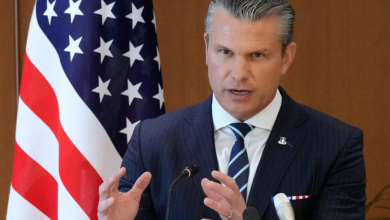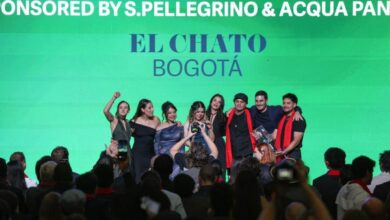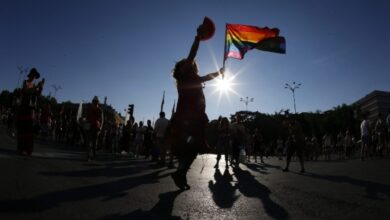Colombia: Who elected the strike committee?
This is how the group that is negotiating with the Government of President Iván Duque was formed.

So far, this is the only organized group that is associated with the social movement that Colombia is experiencing and, in addition, it was the convenor of the first mobilizations on April 28. Photo: EFE
LatinAmerican Post | Santiago Gómez
Listen to this article
Leer en español: Colombia: ¿Quién elige al comité del paro?
In recent days, a photo of several men over 50 or 60 years old leaving the Casa de Nariño and talking to the press has gone viral. The men informed the media that they had not reached an agreement with the Government and that the National Strike will continue. What is striking about this group is that, unlike the stereotype of the protestors who have the president in check, this strike committee is made up of a generational group that has little to do with the demands on the street.
Son todos estos jóvenes los que nos representan en el Comité del Paro pic.twitter.com/ReW0u6Rfkk
— Movimiento Naranja Cali (@naranja_cali) May 17, 2021
These marches have had an important protagonist: young people. These are not only men but also women and feminist groups in Colombia that have grown so much (on par with the rest of Latin America). They all have claims that the new generations ask for: opportunities for young people, equality, zero discrimination, and even environmental policies.
So, faced with this demographic difference between the protestors and the representative Committee, the question arises: Who chose them as interlocutors with the Government?
The answer is simple, so far, this is the only organized group that is associated with the current social movement in Colombia and, in addition, they organized the first mobilizations on April 28. In the absence of groups within the protestors in the main cities, the Government has only been able to find its counterpart in the Strike Committee.
Se sienten uds representados y representadas por el Comité Nacional del Paro ?
— AUGUSTO A OCAMPO (@AUGUSTOOCAMPO) May 16, 2021
Trade unionists stand out among older men. All with a long history of union struggle within the 3 largest groups: Central Unitaria de Trabajadores (CUT); the Confederation of Colombian Workers (CTC) and the General Labor Confederation (CGT). To these, the union of teachers from Colombia (Fecode) is added.
Also read: Colombia: why has there been no consensus with the demands of the strike?
However, these members, who today may not represent young people, do represent several Colombians. For example, the Executive Committees are elected by vote of the affiliates of the Central organizations. They all have clear statutes of election and a position within their organizations. Many of them were even trade unionists, truck drivers, or teachers themselves, so they each carried out their trade until they were elected on the administrative committees.
Also within the Committee are leaders of the Colombian Trucking Association, the Agricultural Dignity of Colombia, and the Democratic Confederation of Pensioners. All of these elected within their organizations that for good or ill, bring together a significant number of focus groups in the country.
The youth quota closest to the demographics of the protestors is met by Jorge Cárdenas (president of Acrees -Colombian Association of Student Representatives-), Cristián Fernando Serna (Secretary-General of Acrees), Jennifer Pedraza (Secretary-General of Acrees), and Andrés Garay .
Pedraza, Cárdenas and Serna were elected as student representatives. Cárdenas from the Pedagógica University; Serna for the Externado University and Pedraza for the National University. The latter is the student representative before the Higher University Council.
For his part, one of the most questioned "representatives" is Andrés Garay Pinto, who is part of the LGBTI Platform for Peace organization and was delegated by it to be part of the Strike Committee.
Avanza el #ParoNacional28A
En Bogotá, en el sector del parque nacional se organiza la Batucada y la movilización en el marco del #ParoNacional #EsElMomentoDeParar28A #VivaElParoNacional28A pic.twitter.com/1k9vsM5xgp
— Central Unitaria de Trabajadores #ParoNacional19M (@cutcolombia) April 28, 2021
Obviously, the great problem for this group of 20 is their low diversity, both in terms of gender (only 2 women), age (only 4 young people), and race (no member of Afro or indigenous communities). But we cannot ignore that several of these members have been elected within their organizations, which in several cases represent or collect the vote or support of hundreds and thousands of Colombians.




